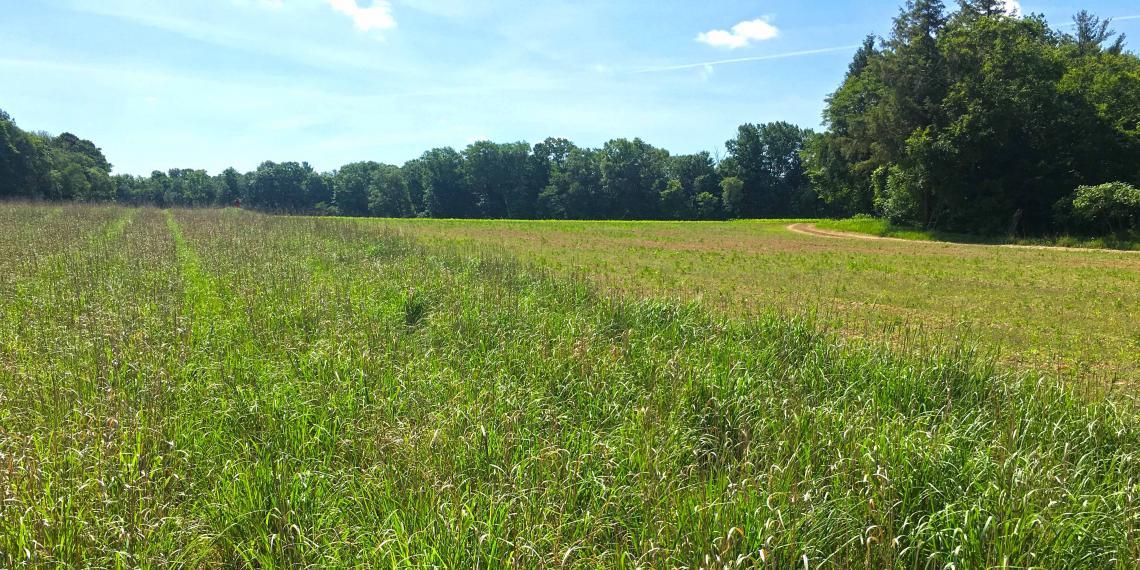Life Will Find a Way: The Important Role of Fungi in Ecological Restoration

When it comes to news about the environment, it’s easy to feel a sense of despair when so much of what we hear is focused on the damage that humans have done to the planet.
But is it really all doom and gloom? To quote the famous Jurassic Park character Dr. Ian Malcolm, “I’m simply saying that life … finds a way.”
Bringing dinosaurs back to life may be considered science fiction, but restoring the health of habitats degraded by human activities, including agriculture, is very much a reality. Current restoration efforts tend to focus largely on the use of plants, but new research from the Department of Integrative Biology suggests that soil microorganisms also play a key role in how ecological restoration should be approached.
Dr. Hafiz Maherali and a team of researchers participating in the Food from Thought program, including recent PhD graduate Dr. Kevin MacColl, found that communities of plant-associated fungi known as “arbuscular mycorrhizae” bounce back quickly during the process of agricultural land restoration. These fungi are of particular interest to ecologists due to their mutually beneficial relationship with plants: the fungi help supply the plant with water and nutrients, while the plant supplies the fungi with carbon.

Mycorrhizal fungi transfer nutrients into plant roots through networks of hyphae in exchange for sugars and lipids.
Comparing actively farmed and restored fields in Norfolk County, Ont., the researchers found that seeding retired fields with native prairie grasses encouraged the quick growth and increased species diversity of these fungal communities.
Rebuilding the health of former agricultural lands can represent a unique challenge, because tillage and fertilization are known to impact soil microbes. This, in turn, has consequences on soil utility and sustainability of current farming practices.
And since some fungi can be sensitive to excess nutrients, agricultural practices often deplete soil of diverse fungal species, leaving a barren soil-scape.
Farmers looking to restore some of their land may think they need to turn to products containing soil “probiotics” to make up for the lack of fungi present, but MacColl says this isn’t necessarily the case. “A first impression is you need to buy these types of products, but there may not be a need to be a financial cost attached to ecological restoration. Fungi may be able to recover naturally.”
Looking at both spore production and plant root colonization, the team found that it took less than 10 years for fungal species abundance and diversity to bounce back. Ecologically speaking, this is a very fast turnaround.
But where do these fungi come from? How can land that has been intensively managed suddenly become home to diverse species of fungi? This remains a mystery, but there are a couple of theories as to why. One theory is that the fungi “leap-frog” from plants in surrounding areas to the prairie grass, rapidly spreading between plants. The other theory is that the spores of the fungi remain in small numbers in the soil, then come back to life once the agricultural pressures are removed.
The benefits to these fungi colonizing the roots of plants are two-fold: healthier plants, and restoration of nutrients like carbon back to the soil, leading to a more stable ecosystem.
What comes next, say the researchers, is understanding how changes in these fungal communities impact the functionality of the soil. In other words, how exactly are these shifts in fungi linked to the ability of the soil to support life?
“There is an unbelievable complicated below-ground ecosystem that people aren’t aware of,” MacColl points out. “Understanding the process of how soil microorganisms help repair the environment after human impact will help researchers understand how to approach ecological restoration.”
So, while it is easy to get caught up in the doom and gloom of today’s environmental news cycle, research is beginning to show that soil fungi are surprisingly capable of bouncing back after human activity.
“People should be aware of how effective restorations can be,” explains MacColl. “Nature has a strong capacity to repair itself.”
Read more about Food from Thought.
Read the full study in Ecological Applications.
Read about other CBS Research Highlights.